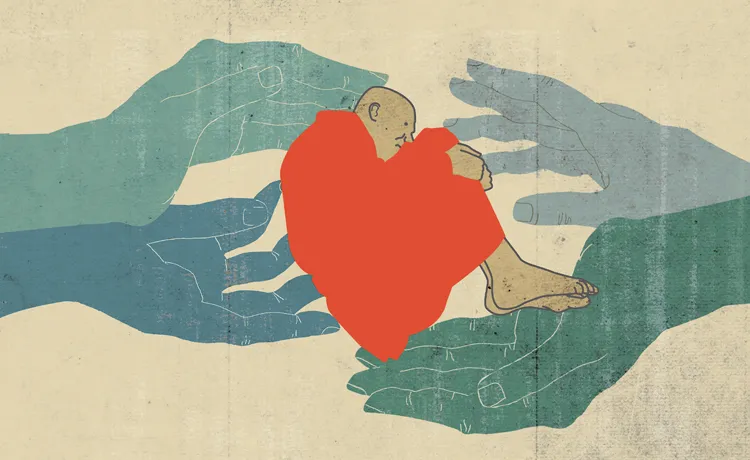There’s always an undercurrent of stress while navigating a busy city in an unfamiliar country. Yet even while driving through rush hour in Hamburg, Germany, for the very first time, with my eyes glued to the traffic in front of me, I couldn’t help but stare at the Church of St. Nicholas as we slowly passed it.

Initially I really only got a good look at the steeple, which was tall and ornate, with elaborate Gothic spires and columns, statues, and gargoyles. Yet it was the color that struck me: A mix of brown and sooty black made the structure look charred. I felt the disconnect between my sense of the sacred—how beautiful churches are supposed to look—and what I saw in front of me. And yet it held my attention nonetheless.
Later, after I had parked the car, I was surprised to see that the steeple was the only portion of the church left standing. During a bombing of Hamburg during World War II, most of the church was leveled, and after—as the city’s citizens focused on rebuilding—they decided to leave the church as it was: an unmistakable reminder of the effects of war.
The Church of St. Nicholas, now a memorial, has become a place of public mourning and remembrance for both guests to the city and its own inhabitants. The site is a reflection of humankind’s worst impulses, and a hope that our collective awareness and repentance of such atrocities will embolden our resolve to strive for love over hate, and peace over war.
As I explored Hamburg over the next couple of days, the memorial was always visible in the distance. At times, I pictured the steeple as a finger, poking and pointing out the failures we can’t seem to escape in our fallen state. But after spending more time with it, I saw it directing my gaze upwards, an ever-present exhortation to embrace grief in hope that it informs and inspires us to do the hard, daily work of loving better.
Illustration by Makers Co.





